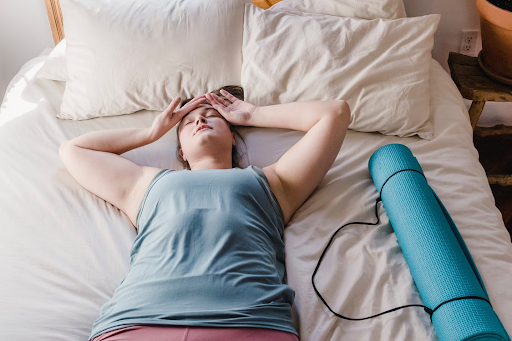Have you ever found yourself struggling to stay awake during the day? Are you constantly feeling drowsy or tired — even after getting a full night’s sleep? There are few things more frustrating than getting the recommended hours of shuteye and still feeling like you barely slept. If this sounds like you, you may want to get tested for sleep apnea so you can undergo treatment that will help you feel more rested throughout the day.
Sleep apnea is a sleep disorder that causes individuals to experience breathing disruptions while they sleep, impacting their quality of sleep each night. In most cases, sleep apnea goes undiagnosed by the individual until a partner informs them that they were snoring, choking, or gasping for air during the night. However, there are three different types of sleep apnea, all of which present similar symptoms but have different causes.
Follow along as ApneaMed walks you through the three types of sleep apnea.
Obstructive Sleep Apnea
Obstructive sleep apnea is the most common form of sleep apnea and occurs when the individual experiences a blockage in their airway. The soft tissues in their throat collapse while sleeping, which blocks their airway. As a result of the restricted airway, the patient experiences reduced blood flow to the brain which signals to the body that it needs to breathe. This causes the individual to snore or gasp for air in an attempt to reopen their airway — usually without ever waking up or realizing that these breathing disruptions are occurring.
The breathing cessations recur repeatedly throughout the night and can happen from a few times to over a hundred depending on the severity of the apnea.
Central Sleep Apnea
Another form of sleep apnea is central sleep apnea, which unlike obstructive sleep apnea, is not caused by a restricted airway. Central sleep apnea occurs when the individual’s brain temporarily stops sending the proper signals to the muscles that control their breathing. This neurological response is often caused by medical problems or conditions that impact the brainstem, making central sleep apnea much less common than obstructive sleep apnea.
Complex Sleep Apnea
The third type of sleep apnea, known as complex sleep apnea, is often confused as obstructive sleep apnea early on due to presenting the same symptoms. Like obstructive sleep apnea, a sleep specialist would likely recommend beginning continuous positive airway pressure (CPAP) therapy. However, the condition is classified as complex sleep apnea when the breathing disruptions continue even after utilizing the recommended treatment plan and opening up their airways while sleeping.
When to See a Doctor for Breathing Disruptions
When left untreated, sleep apnea can make it difficult for you — or your loved one — to go about their day due to extreme tiredness, and it can lead to more severe health concerns. Sleep apnea can cause heart disease, diabetes, stroke, heart failure, high blood pressure, and more.
If you or a loved one are experiencing breathing disruptions throughout the night, it’s essential to get tested for sleep apnea so you can get treatment to prevent other health issues.
If you are having difficulty getting a good night’s rest, it’s time to consider getting tested for sleep apnea. For a convenient and affordable option, ApneaMed offers a home sleep study that can be self-administered in the comfort of your own home — saving you both time and money.
ApneaMed offers various home sleep tests and in-home breathing equipment to help you treat your obstructive sleep apnea. Contact our team to learn more.

